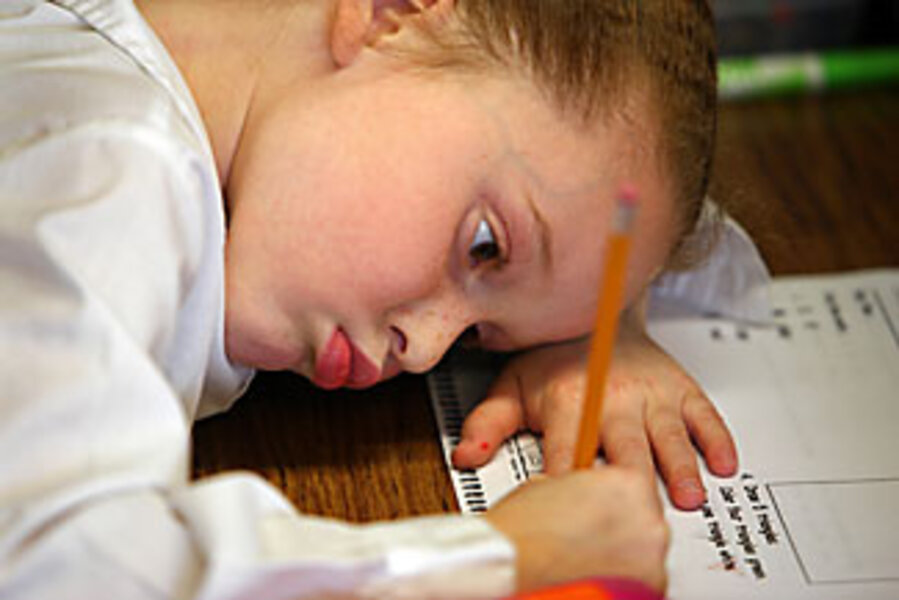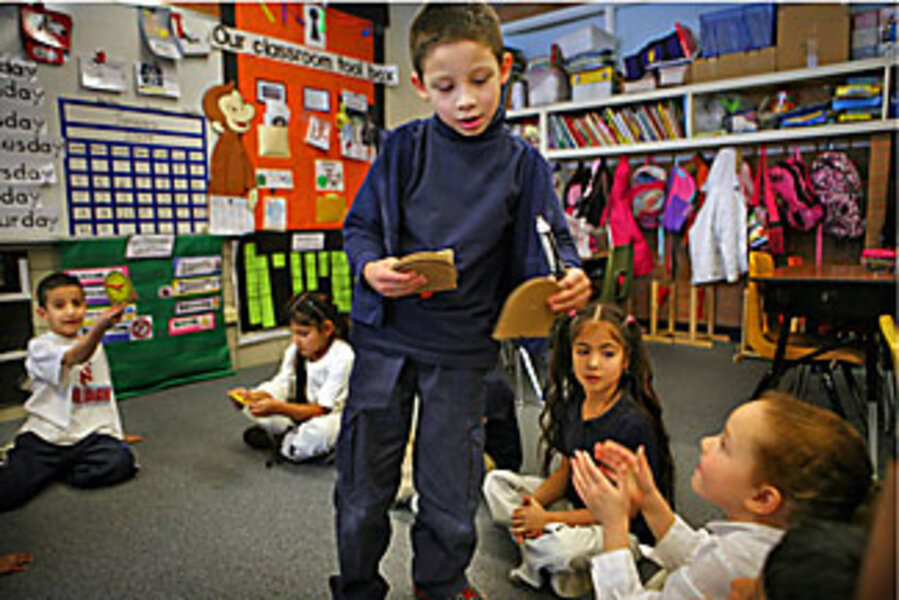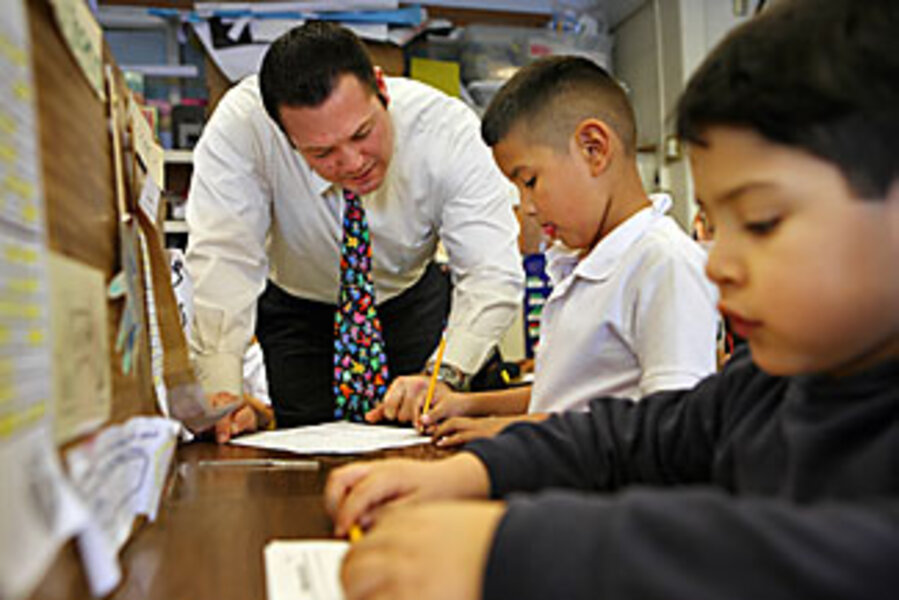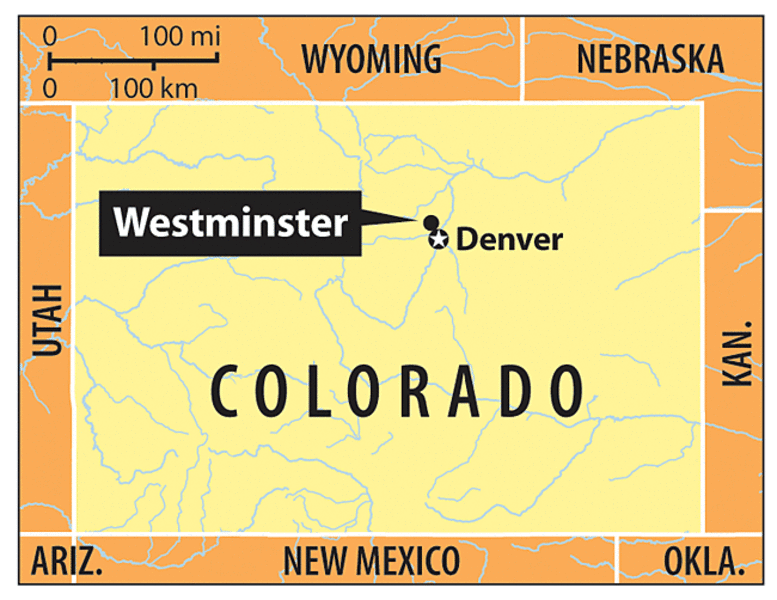A Colorado school district does away with grade levels
Loading...
| Westminster, Colo.
School districts across the US are trying to improve student performance and low test scores. But few have taken as radical an approach as Adams 50.
For starters, when the elementary and middle-school students come back next fall, there won't be any grade levels – or traditional grades, for that matter. And those are only the most visible changes in a district that, striving to reverse dismal test scores and a soaring dropout rate, is opting for a wholesale reinvention of itself, rather than the incremental reforms usually favored by administrators.
The 10,000-student district in the metropolitan Denver area is at the forefront of a new "standards-based" educational approach that has achieved success in individual schools and in some small districts in Alaska, but has yet to be put to the test on such a large scale in an urban district.
"There was a sense of urgency to attend to what wasn't happening for kids here," says Roberta Selleck, district superintendent, explaining why she decided to go with a drastic approach. "When you see the stats for the whole school district over time, we realized we are disconnecting [from] our kids."
The change that's getting by far the most attention is the decision to do away with traditional grade levels – for kids younger than eighth grade, this first year, though the district plans to phase in the reform through high school a year at a time. Ultimately, there will be 10 multiage levels, rather than 12 grades, and students might be in different levels depending on the subject. They'll move up only as they demonstrate mastery of the material.
But Dr. Selleck and others are quick to emphasize that that's only one piece of a radically different, more student-centered, approach to learning – and that it's not the same as tracking, the currently out-of-favor system of grouping students by ability.
Students help craft own lesson plans
The district is training teachers to involve students in the lesson plan in a far greater way than before – the students articulate their goals and develop things such as a code of conduct as a classroom. And when children fall short of understanding the material, they keep working at it. The only "acceptable" score to move on to the next lesson is the equivalent of a "B" in normal grading – hopefully showing proficiency and giving kids a better foundation as they move on to more advanced concepts. Advocates sometimes describe it as flipping the traditional system around so that time, rather than mastery of material, is the variable.
While the idea of "standards-based education," as it's often known, has been around for a while, the only public district where it's been tried for any length of time is in Alaska, where the Chugach district – whose 250 students are scattered over 22,000 square miles – went from the lowest performing district in the state to Alaska's highest-performing quartile in five years in the 1990s, a shift the former superintendent, Richard DeLorenzo, attributes to the new philosophy.
"We saw how radical a reinvention needs to happen," says Mr. DeLorenzo, who is serving as a consultant to Adams 50 and is now the founder of the Re-Inventing Schools Coalition, which is seeking to spread the model.
In Adams 50, the challenges aren't quite so severe as they were in Chugach, which had only had one college graduate come out of its schools in the 20 years before DeLorenzo implemented the reforms. But the district, which has a 58 percent graduation rate, has been on an academic watch list for several years now, and has seen a drastically shifting student population in which percentages of minorities, non-English speakers, and low-income kids have shot up.
Selleck decided the district needed a massive transformation, and got the OK from the state. This year, the district is beginning to phase in the changes before all the schools switch to the new, gradeless system next year. One elementary school is serving as a pilot program, and many of the 300 or so teachers who have undergone training from DeLorenzo are implementing a modified approach in their classrooms – albeit still in traditional grade levels.
In Nikolaus Namba's first-grade classroom, that means that his students have worked over the year to create – and refine – a classroom code of conduct (which includes items such as "don't hit people" and "we will not play with hair" written in childish handwriting on Post-it notes mounted in the front of the class) and goals of the week. Students use what Mr. Namba calls "power voting" with the Post-its to get a voice in these and other classroom decisions – hoping, ultimately, to give them a greater sense of independence and ownership of their learning.
Namba says it's been somewhat tough to implement the new approach halfway – still in a traditional first-grade classroom with all ability levels and learning speeds mixed in – but he says that even a few months into the year, he's come to appreciate it.
"We have discussions about what is a good student, and what does a good teacher look like," he says, noting that it's easier now to talk to students about work that comes up short, for instance, of where they thought they were, and says that everyone is aware of each specific thing they need to learn.
On one recent day, that included a quiz on telling time. Namba has the student who received the only perfect score help some of the others. "Cristian knows how to tell time," he says. "He's available to help others."
Next year, Namba hopes to really dive into the reforms, and is looking forward to being able to work with students all at a similar level. "The goal is that they'll accomplish things faster," he says. Moving up without truly understanding what they learn "is what creates the cracks in the foundation later on."
But if Namba and other teachers who have bought into the idea in a big way have high hopes for the future, there are also significant complications.
Scheduling is a big one. It's also unclear what will happen if large numbers of kids arrive in high school still unable to demonstrate proficiency in certain subjects, like math, and a bottleneck gets created. Since no student can move forward without a "B" equivalent, it's also essentially impossible for students to have lower than a 3.0 GPA, which could be a challenge to explain to colleges.
'Video-game' approach to grade levels
Still, Selleck says most parents she talks to are enthusiastic, and the district is doing an enormous amount of outreach and education to explain the changes to them. (She often uses a video game analogy: Students are engaged, take as much or as little time as they need to at each level, and can't move on to the next level until they've mastered the one before it).
Arisbeth, an articulate fifth-grader at F.M. Day school whose teacher is already incorporating some of the reforms, says she's looking forward to the changes. "You'll be working with other kids where you're working on the same thing," she explains. Already, she adds, "Our voices are being heard more."








